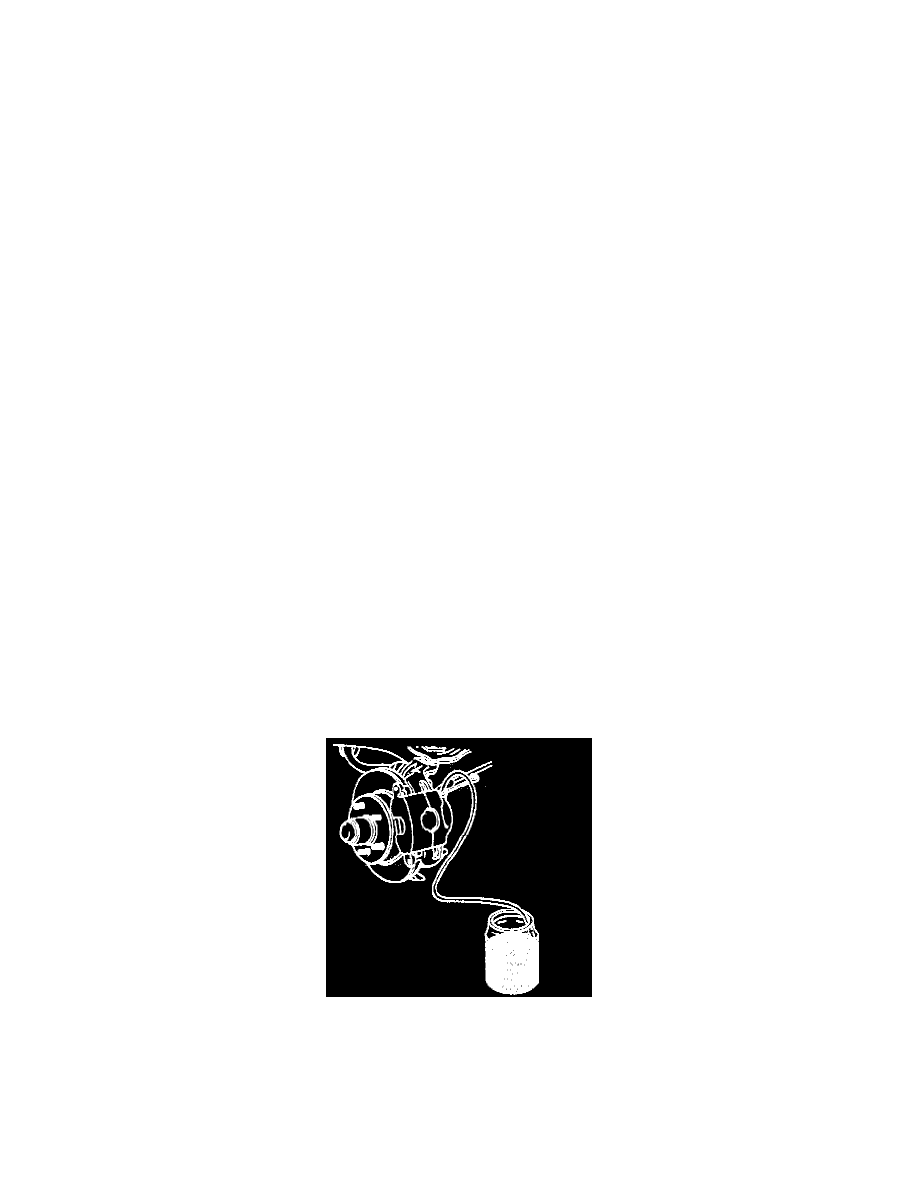C 2500 Truck 2WD V8-5.7L VIN R (1997)

Brake Bleeding: Service and Repair
System Bleeding
Manual Bleeding
Tools Required:
^
J28434 Wheel Cylinder Bleeder Wrench
NOTE: Bleeding is necessary if air has entered the hydraulic brake system. It may be necessary to bleed the system at all four wheels if a low fluid level
allowed the air to enter the system or the brake pipes have been disconnected at the master cylinder or combination valve. If a pipe is disconnected at one
wheel, then bleed only that wheel. The time required to bleed the hydraulic system when the master cylinder is removed can be reduced by bench
bleeding the master cylinder before installing it on the vehicle.
NOTE: If the vehicle is equipped with a vacuum booster, relieve the vacuum reserve by applying the brakes several times with the engine off.
CAUTION: Brake fluid will damage electrical connections and painted surfaces. Use shop cloths, suitable containers, and fender covers to prevent the
brake fluid from contacting these areas. Always reseal and wipe oft brake fluid containers to prevent spills.
1. Fill the master cylinder reservoir with Delco Supreme 11(R) Hydraulic Brake Fluid GM P/N 1052535 or an equivalent DOT 3 motor vehicle brake
fluid. Maintain the fluid level during bleeding.
2. If the master cylinder is suspected to have air in the bore, bleed it before any wheel cylinder or caliper.
a. Disconnect the forward brake pipe connection at the master cylinder. Refer to Master Cylinder Service and Repair.
b. Allow the brake fluid to flow from the connector port.
c. Connect the brake pipe but do not tighten.
d. Slowly apply the brake pedal and allow the air to bleed from the loose fitting.
e. Tighten the fitting before releasing the pedal.
f.
Wait 15 seconds.
g. Repeat this sequence, including the 15 second wait, until all air is purged from the bore.
h. After all air has been removed from the forward connection, repeat this procedure for the rear pipe.
3. If the Brake Pressure Modulator Valve (BPMV) of the Four Wheel Antilock Brake (4WAL) system is replaced or suspected to have air trapped
inside, it must be bled next. Refer to Antilock Brake System Service and Repair.
4. Bleed each wheel in the following sequence:
a. Right rear.
b. Left rear.
c. Right front.
d. Left front.
5. Attach a hose to the wheel cylinder/caliper bleeder valve.
Bleeder Hose Immersion
^
Immerse the opposite end of the hose into a container partially filled with clean brake fluid.
6. Slowly apply the brake pedal one time and hold.
7. Loosen the bleeder valve to purge the air from the wheel cylinder/caliper.
8. Tighten the bleeder valve to 13 Nm (110 inch lbs.) and slowly release the pedal.
9. Wait 15 seconds.
